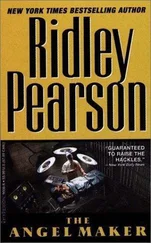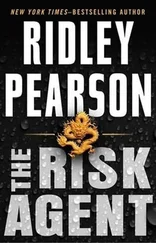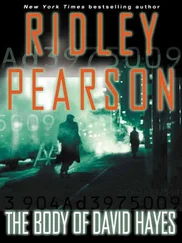Ridley Pearson - The First Victim
Здесь есть возможность читать онлайн «Ridley Pearson - The First Victim» весь текст электронной книги совершенно бесплатно (целиком полную версию без сокращений). В некоторых случаях можно слушать аудио, скачать через торрент в формате fb2 и присутствует краткое содержание. Жанр: Триллер, на английском языке. Описание произведения, (предисловие) а так же отзывы посетителей доступны на портале библиотеки ЛибКат.
- Название:The First Victim
- Автор:
- Жанр:
- Год:неизвестен
- ISBN:нет данных
- Рейтинг книги:3 / 5. Голосов: 1
-
Избранное:Добавить в избранное
- Отзывы:
-
Ваша оценка:
- 60
- 1
- 2
- 3
- 4
- 5
The First Victim: краткое содержание, описание и аннотация
Предлагаем к чтению аннотацию, описание, краткое содержание или предисловие (зависит от того, что написал сам автор книги «The First Victim»). Если вы не нашли необходимую информацию о книге — напишите в комментариях, мы постараемся отыскать её.
The First Victim — читать онлайн бесплатно полную книгу (весь текст) целиком
Ниже представлен текст книги, разбитый по страницам. Система сохранения места последней прочитанной страницы, позволяет с удобством читать онлайн бесплатно книгу «The First Victim», без необходимости каждый раз заново искать на чём Вы остановились. Поставьте закладку, и сможете в любой момент перейти на страницу, на которой закончили чтение.
Интервал:
Закладка:
Ridley Pearson
The First Victim
CHAPTER 1
PUGET SOUND, WASHINGTON
It came off the northern Pacific as if driven by a witch’s broom: the remnants of typhoon Mary, which had killed 117 in Japan, left 6,000 homeless in Siberia and flooded the western Aleutians for the first time in sixty-two years. In the ocean’s open waters it drove seas to thirty feet with its eighty-five-mile-per-hour winds, dumping three inches of rain an hour and barreling toward Victoria Island, the San Juan Islands, and the largest estuary in North America, known on charts as Puget Sound. It headed for the city of Seattle as if it had picked its course off a map, and it caused the biggest rush on plywood and chipboard that King County had ever seen.
In the partially protected waters west of Elliott Bay, one nautical mile beyond the established shipping lanes that feed Seattle’s East Waterway docklands, the pitch-black night was punctured by the harsh illumination of shipboard spotlights that in clear weather might have reached a half mile or more but failed to stretch even a hundred yards in the dismal deluge that had once been Mary. The freighter, Visage , a container ship, rose and sank in fifteen-foot swells, rain drumming decks stacked forty feet high with freight cars. The Asian crew followed the orders of the boatswain who commanded a battery-operated megaphone from an upper deck, instructing them to make ready.
The huge ship pitched and yawed and rolled port to starboard, threatening to dump its top-heavy cargo. The crew had been captured inside Mary’s wrath for the last three hundred nautical miles-three impossibly long days and nights-rarely able to sleep, some unable to eat, at work all hours attempting to keep the hundreds of containers on deck secure. Early on in the blow a container had broken loose, sliding across the steel deck like a seven-ton brick and crushing the leg of an unsuspecting crewman to where the ship’s medic could find no bones to set, only soft flesh where the shin and knee had once been. Three of the crew had tied themselves to the port rail where they vomited green bile with each and every rise and fall. Only four crewmen were available for the transfer that was to come.
The neighboring tug and barge, seventy feet and closing off Visage ’s starboard bow, were marked by dim red and green running lights, a single white spot off the tug’s bow, and a pair of bright halogens off the tower of the telescoping yellow crane chained down to the center of the barge. The tug and barge disappeared into a trough, rising and reappearing a moment later, only to sink once again into the foam, the crane as ominous and unnatural as an oil platform. The storm prevented any hope of docking the barge to the freighter, but both captains had enough motivation in their wallets to attempt the transfer nonetheless. Like two ends of a seesaw, the vessels rose and fell alternately, the crane’s tower pointing like a broken finger into the tar black clouds. Radio communication was forbidden. Signal lights flashed, the only contact between the two captains.
Finally, in a dangerous and daring dance, the two vessels drew close enough for the crane’s slip harness to be snagged by the freighter’s crew on an upward pendulum swing. Briefly, the barge and container ship were connected by this dangling steel cable, but it broke loose of their hold, the barge lost to another swell. It was twenty minutes before the crane’s steel cable was finally captured for a second time.
The vessels bobbed alongside one another, the slack in the crane’s cable going dangerously tight with each alternating swell. The exhausted deckhands of the Visage worked furiously to be rid of this container, to a member wondering if it was worth the bonus pay they had been promised.
When the moment of exchange arrived, the crane made tight the cable and the deckhands cut loose the container’s binding chains while lines secured to winches on both vessels attempted to steady the dangling container, for if it swung too violently it was likely to capsize the barge. As the first of these four lines snapped, the container, dangling precipitously over the void of open foam between barge and ship, shifted awkwardly, suddenly at a treacherous angle. Above the deafening whistle of wind and the lion’s roar of the sea came the muted but unmistakable cry of human voices from within this container.
A crewman crossed himself and looked toward heaven.
A second line snapped. A third.
The container swung and slipped out of the harness, splashing into the water. It submerged and then bobbed back up like a whale surfacing.
The captain of the Visage barked his orders. The mighty twin screws spun to life, the gigantic ship lumbering to port and away from the barge and crane in an effort to keep the container from being crushed between the vessels.
The spotlights on the freighter were ordered extinguished as the ship was consumed by the storm, lumbering back toward the shipping lane where it belonged.
Behind it, in its wake, the abandoned container, singing of human screams and cries of terror, rode the mounting swells into darkness, lost to the wash of the waves and the whim of the wind.
CHAPTER 2
On the evening of Monday, August 10, when the coattails of typhoon Mary had receded into little more than a torrential downpour, a rust orange container appeared bobbing in the churning green waters and whitecaps of Puget Sound. Spotted by a copilot of a test flight returning to Boeing Field, it was immediately reported to the Coast Guard. Loose containers were not an uncommon occurrence in the Sound. The urgency behind the Coast Guard’s efforts to recover the orphaned container began as a result of the threat to navigation, especially with night closing in. ‘‘Metal icebergs,’’ they were called. This urgency was heightened, however, as the Coast Guard’s patrol boat came alongside the partially sunken container and human cries were heard from within. At that point, the call went out to the Seattle Police Department.
The piano sounded better than ever. For an old beat-up baby grand in a smoke-filled comedy bar where no one paid the instrument any attention except for the homicide cop who presently occupied its bench, his large hands and stubby fingers evoking a somber rendition of ‘‘Blue Monk,’’ its tone was earthy and mellow, just the way jazz and blues were supposed to sound. The notes flowed out of Lou Boldt without conscious thought or preparation, sounding of the torments born of forty-odd years of life and a job involving all too much death.
Boldt aimed his interpretation toward the table where his wife and friends sat. If his five-year-old son and three-year-old daughter had been there he would have had everything and everyone that mattered to him in this one room: Elizabeth, his sweetheart, wife and partner; Doc Dixon, the county medical examiner who’d been his friend for most of Boldt’s twenty-plus years with Seattle Police; John LaMoia, who had taken Boldt’s place as a Crimes Against Persons’ squad sergeant; Bobbie Gaynes, the first woman cop to join that squad; Daphne Matthews, forensic psychologist and confidante; and the lab’s Bernie Lofgrin, with his Coke-bottle glasses and leaking-balloon laugh.
He didn’t need to invent an emotion behind his playing. Liz’s lymphoma had been in remission for one full year, and Boldt’s happy hour performance that night at Bear Berenson’s club The Joke’s on You had developed into an impromptu celebration of her progress, a celebration that only a cop’s wife could tolerate, but one that Liz would actually appreciate. Morbid humor was a way of life with this group, and while Liz didn’t totally fit in with the others, they were family to her, just as they were to her husband.
Читать дальшеИнтервал:
Закладка:
Похожие книги на «The First Victim»
Представляем Вашему вниманию похожие книги на «The First Victim» списком для выбора. Мы отобрали схожую по названию и смыслу литературу в надежде предоставить читателям больше вариантов отыскать новые, интересные, ещё непрочитанные произведения.
Обсуждение, отзывы о книге «The First Victim» и просто собственные мнения читателей. Оставьте ваши комментарии, напишите, что Вы думаете о произведении, его смысле или главных героях. Укажите что конкретно понравилось, а что нет, и почему Вы так считаете.












